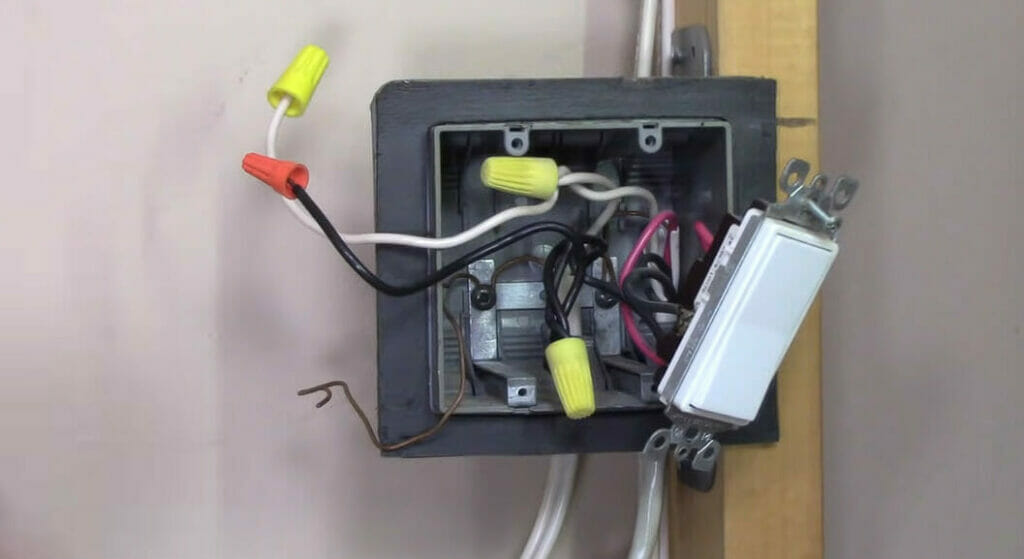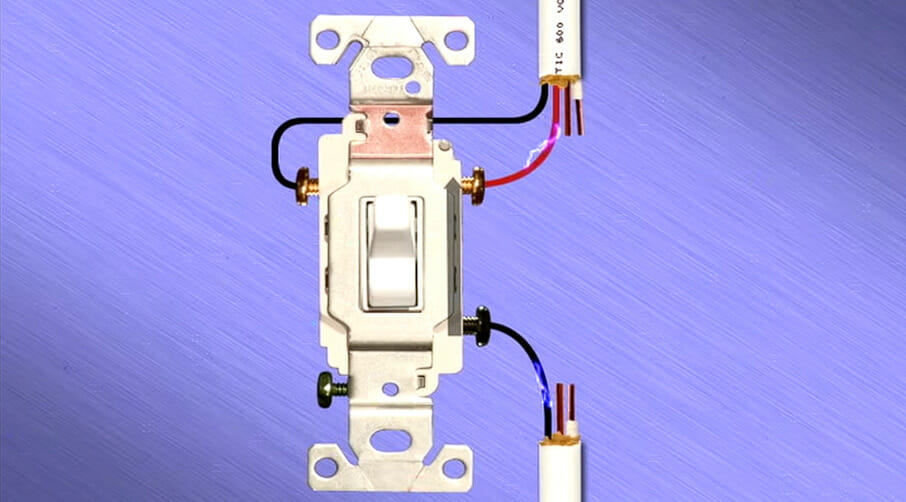What is Common Wire in 3-Way Switch? (Identification and Use)

Ever find yourself scratching your head over a 3-way switch? You’re not alone. These little guys can be puzzling, especially the “common wire.”
So, what’s this elusive common wire all about? Well, in a 3-way switch, the common wire, typically black or red, is the one that delivers electricity from its source to your light bulb or other device.
In this article, I’ll dive into more details about common wires in a 3-way switch.
The Role of the Common Wire in a Three-Way Switch

The common wire, often black or red, is crucial in making that three-way switch work like magic.
Depending on the specific wiring setup, the conductor carries power from the source to either one of the switches or directly to your light fixture.
The common wire is called such because it’s a common path for electrical current when multiple switches control the same light or outlet.
What makes it unique is that it’s always hot, meaning it constantly has power running through it unless you turn off the whole electrical system – safety first, right?
Now let’s get into how this all works together. In a typical three-way switch scenario:
- Switch One has two traveler wires and one common wire.
- Switch Two also has two traveler wires and one common wire.
What happens here is interesting. When you flip Switch One, it alters which traveler wire is connected to its common wire. This completes or breaks the circuit at Switch Two, turning your light on or off respectively.
Still with me? Great! So basically, without our trusty common wire, there’d be no way for electricity to flow between switches and consequently no way to control your lights from those two different locations.
It might seem complex, but trust me, once you’ve installed a few three-way switches, it’ll become second nature!
The Color Coding and Connections of Three-Way Switch Wires

Here’s a fun fact: in a three-way switch, the common wire is usually the odd one out in terms of color. It’s like the rebel of the group!
Now, don’t get too excited yet. There isn’t an absolute standard for what color this wire should be, but it’s commonly black or red. So remember:
- Common wire: Typically black or red
Remember that even though these colors aren’t set in stone and could change based on different factors, always check with your wiring manual or call your friendly neighborhood electrician when you’re in doubt!
Common Wire Color in Different Countries
| Country | Common Wire Color |
|---|---|
| USA | Black or Red |
| UK | Brown |
| Australia | Brown or Red |
| Canada | Black or Red |
The Wiring Configurations of a Three-Way Switch

Let’s dive deeper into the heart of three-way switches and their mysterious common wire.
As mentioned, the common wires are usually black or red and work as messengers between both switches.
Here’s how it works:
- When both switches are up (or down), the circuit closes, and – voila! – we have light!
- If either switch flips its position, that breaks the connection between them, interrupting our lovely circuit and plunging us back into darkness.
Just to make it simpler, I’ve made up this quick table:
| Switch Position | Circuit Connection | Light Status |
|---|---|---|
| Both Up/Down | Closed | On |
| One Flip | Broken | Off |
But don’t forget about our silent supporter – the neutral wire (usually white). It completes the loop for current flow when you turn your lights off.
Also, remember this little cheat code: In most cases, if you open up your three-way switch box and see multiple red wires, congratulations! You probably found your common wires!
So there you have it, my friends – an inside look at three-way switches and their ever-important common wire.
Remember, if you’re uncomfortable messing around with electrical wiring yourself, call in an electrician! Your safety comes first always!
References
Organizations:
- The National Electrical Contractors Association (NECA). https://www.necanet.org/
- The National Electrical Manufacturers Association (NEMA). https://www.nema.org/
Books:
- “Wiring a House: 5th Edition” by Rex Cauldwell
- “Black & Decker The Complete Guide to Wiring, Updated 7th Edition” by Editors of Cool Springs Press
Websites:
- Understanding Three-Way Wall Switches. https://www.thespruce.com/
- The family handyman. https://www.familyhandyman.com/
Video References
MarVistaCat
Terry Peterman
